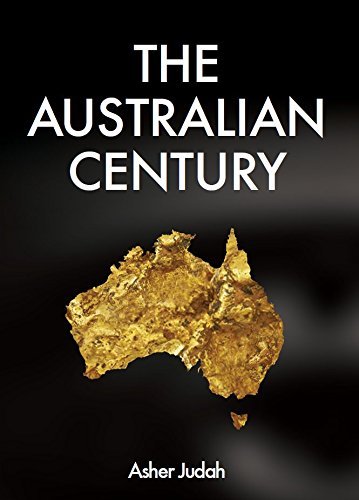Australian Federal Police Assistant Commissioner Tim Morris told an audience at the weekend that "those with nothing to hide have nothing to fear".
This was written up in Fairfax papers as "carefully worded case" for the Government's mandatory data retention policy.
Now, every piece of evidence we have suggests the terrorist threat right now is severe. It might be growing.
But Morris's statement is a worry. It lacks all sense of proportionality — essential when crafting security policy.
More importantly, it shows how poorly defended our privacy rights are. Are we really at the stage where we even have to justify the very existence of private spaces — spaces where we are hidden from the all-seeing state?
It is true that the value of privacy is conceptually difficult. We're constantly trading away privacy for other goals.
Whenever we provide our details to someone at a call centre, share secrets with friends, interact with governments, even simply go outside, we're in some small way relinquishing control over our own personal information; allowing others to see or know details about ourselves that might otherwise be secured.
It's particularly difficult today, when we have more opportunities than ever to share information — and the authorities have more capacity than ever to obtain information about us without our consent.
So many people dismiss privacy as a sort of anachronism: either a lost cause or something that only a recluse would care about. Privacy is dead. You've heard this before.
But I'll bet even AFP assistant commissioners secure their internet banking passwords and close their blinds at night.
Privacy fulfils a deep psychological need. Society demands that we mask our true selves and moderate our behaviour when we interact with others. Social norms regulate how we act in public. In many ways these norms are valuable because they ensure a well-ordered public space.
But those norms can also be stifling. We need a space of our own as relief from the judgment of others, if nothing else.
Indeed, the move towards toleration for identity that violated current social attitudes — like homosexuality — was begun by defending the privacy of one's own home.
Happily we've moved past the days where sexuality is just a matter of what people do behind closed doors. But we shouldn't forget how for such a long time privacy offered protection against an oppressive society.
The need for privacy seems to be an innate part of the human condition. Ethnographers have found that privacy is a universal cultural attribute.
And if you believe in individual freedom — if you believe in any way that we should protect the rights of the individual against the collective — you should be very jealous of any coercive encroachments on the private realm.
As the sociologist Wolfgang Sofsky writes:
Privacy is the citadel of personal freedom. It provides defence against expropriation, importunity, and imposition, against power and coercion.
With all this in mind, the nothing-to-hide, nothing-to-fear argument is truly creepy.
Think of all the assumptions that underpin it.
First: you have to know what you're doing is wrong. Second: you have to agree that what you are doing is wrong. Third: you have to trust government agents to only violate the privacy of the bad guys. Fourth: you have to trust government agents to not misuse what they find when they observe you. Fifth: you have to believe that only government agents are able to observe you.
These assumptions are questionable, to say the least.
Attorney-General George Brandis has been assuring us we can trust the Government, but that's not very satisfactory.
Anyway, government agents aren't the only people who might access data kept under data retention laws.
What about rogue staff of internet service providers? Or hackers attracted to these giant new honey-pots of data? Or private litigants? Data kept under data retention laws will be available in civil litigation as well.
In his national security statement on Monday Tony Abbott flagged further legislation clamping down on "organisations that incite religious or racial hatred" and signalled his intention to strengthen "prohibitions on vilifying, intimidating or inciting hatred".
But the Government passed legislation that, we were told, was intended to do pretty much the same thing. I argued on The Drum in September that new limits on "advocacy of terrorism" were redundant at best, dangerous at worst.
Who knows what this next tranche of laws outlawing advocacy of terrorism are supposed to add.
But recall the first assumption of the nothing-to-hide argument. You have to know what you are doing is wrong.
With speech prohibitions growing as fast as legislators can draft them, there's every reason to be afraid for our privacy, and every reason to care when it is taken from us.

 Dr Terrence Moore's book, The Story-Killers: A common-sense case against the Common Core, reveals how the teaching of the Western literary canon is being eroded in the United States by progressive educationalists. The Common Core ― a government-funded school curriculum ― is currently operational in 46 American states.
Dr Terrence Moore's book, The Story-Killers: A common-sense case against the Common Core, reveals how the teaching of the Western literary canon is being eroded in the United States by progressive educationalists. The Common Core ― a government-funded school curriculum ― is currently operational in 46 American states. The teacher should not be overly preoccupied with structural features in the text (such as its setting and plot trajectory), as these draw attention away from the study of characters and ruin the suspension of disbelief which allows students to truly lose themselves in good literature, as the author intended.
The teacher should not be overly preoccupied with structural features in the text (such as its setting and plot trajectory), as these draw attention away from the study of characters and ruin the suspension of disbelief which allows students to truly lose themselves in good literature, as the author intended. The abundance of information available to us today would have been unimaginable to people living only twenty years ago. Previous generations found themselves bound to a restricted group of information channels and distribution networks, which were often slow and with limited scope. With the emergence of the internet everything changed. Suddenly, the flow of information and the methods of exchange became seemingly limitless.
The abundance of information available to us today would have been unimaginable to people living only twenty years ago. Previous generations found themselves bound to a restricted group of information channels and distribution networks, which were often slow and with limited scope. With the emergence of the internet everything changed. Suddenly, the flow of information and the methods of exchange became seemingly limitless. These laws, which were introduced because of heavy lobbying from stage coach and railroad companies, stifled the growth of the industry in Britain. But in Germany and the United States (except the state of Vermont), who did not have any such laws, the industry flourished. Britain finally repealed this law in 1896.
These laws, which were introduced because of heavy lobbying from stage coach and railroad companies, stifled the growth of the industry in Britain. But in Germany and the United States (except the state of Vermont), who did not have any such laws, the industry flourished. Britain finally repealed this law in 1896. "Herodotus", Tom Holland writes, "is the most entertaining of historians. Indeed, he is as entertaining as anyone who has ever written ― historian or not."
"Herodotus", Tom Holland writes, "is the most entertaining of historians. Indeed, he is as entertaining as anyone who has ever written ― historian or not." For the most part, he succeeds, although he hardly provides a literal translation from the Greek language. In the first book, for example, he has the reluctant regicide Gyges say to the Lydian queen,
For the most part, he succeeds, although he hardly provides a literal translation from the Greek language. In the first book, for example, he has the reluctant regicide Gyges say to the Lydian queen, An important contribution to the debate about Australia's future prosperity, The Australian Century ― a new book by Asher Judah ― sets out a roadmap that will ensure we remain a key economic and political actor over the twenty-first century.
An important contribution to the debate about Australia's future prosperity, The Australian Century ― a new book by Asher Judah ― sets out a roadmap that will ensure we remain a key economic and political actor over the twenty-first century. This is a rare opportunity for Australia. High demand for raw materials, energy and agricultural products is predicted to grow with demand cycles reaching well into this century. Australia, as a major supplier of these commodities, will consequently retain positive terms of trade and long-term strategic importance.
This is a rare opportunity for Australia. High demand for raw materials, energy and agricultural products is predicted to grow with demand cycles reaching well into this century. Australia, as a major supplier of these commodities, will consequently retain positive terms of trade and long-term strategic importance.